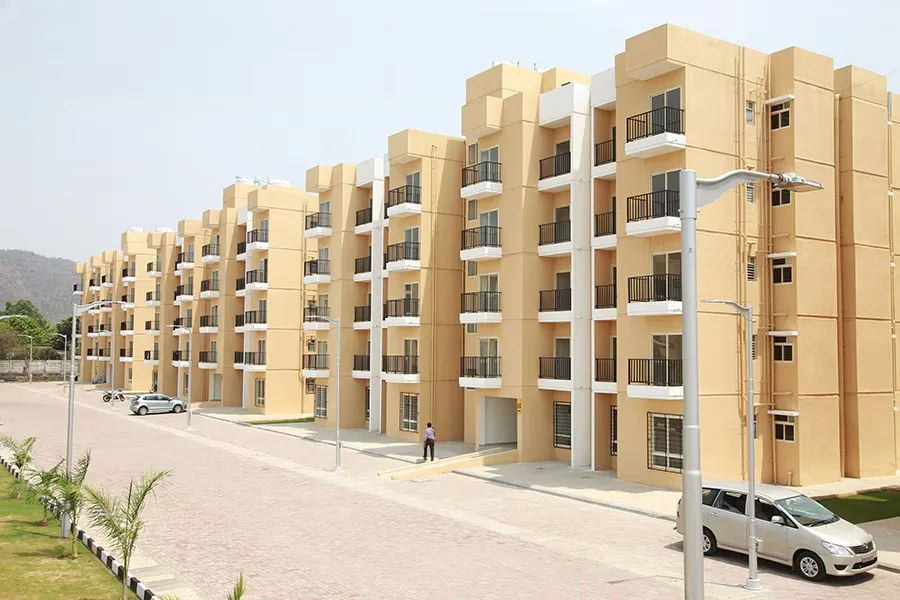
As India strides 2024, addressing housing affordability has become increasingly important due to rapid urbanisation and a growing population. The demand for affordable housing solutions is more pressing than ever. According to a recent report by the National Housing Bank, over 70 million people in India are currently living in inadequate housing conditions. To meet this challenge, a comprehensive approach that incorporates innovative strategies and leverages emerging trends is essential. The affordable housing market in India, valued at USD 3.17 billion in 2024, is expected to grow at a compound annual growth rate (CAGR) of 19.80% through 2030. Government initiatives, particularly the Pradhan Mantri Awas Yojana (PMAY), launched in 2015, are central to these efforts. PMAY aims to provide affordable housing for all by offering significant subsidies and incentives to developers and homeowners, especially in economically disadvantaged areas, low-income groups, and middle-income groups. These incentives include interest rate subsidies on home loans, direct financial aid for development, and tax benefits for developers committed to affordable housing projects.
Current State of Housing Affordability in India
The housing affordability crisis in India is escalating, according to recent data. In 2024, property prices in major cities like Mumbai, Delhi, and Bengaluru have surged by 15-20% over the past year, further widening the gap between income levels and housing costs. The Ministry of Housing and Urban Affairs reports that over 50% of Indian households are now spending more than 30% of their income on rent or mortgage payments, underscoring the severity of the affordability issue.
Addressing the Housing Affordability Challenge: Key Approaches
The widening gap between income levels and housing costs has intensified the need for effective solutions in affordable housing. Different approaches are being adopted to address this issue, as discussed below.
1. Government Initiatives and Policies
The Indian government has been proactive in addressing the housing shortage through various initiatives. The Pradhan Mantri Awas Yojana (PMAY) continues to be a cornerstone of these efforts. Launched in 2015, PMAY aims to provide affordable housing to all by 2022, and despite the extension into 2024, progress has been notable. As of mid-2024, over 10 million homes have been sanctioned under this scheme, with a focus on the economically weaker sections (EWS) and low-income groups (LIG).
Additionally, the introduction of the Affordable Rental Housing Complexes (ARHCs) scheme has been a game-changer. By offering rental homes at subsidized rates, this initiative targets migrant workers and urban poor, addressing the rental housing gap in cities.
2. Public-Private Partnerships (PPPs)
Public-private partnerships are proving to be an effective model for expanding affordable housing. Collaborations between government bodies and private developers have led to the creation of affordable housing projects that might not have been feasible otherwise. For example, the collaboration between the Delhi Development Authority (DDA) and private builders has resulted in the development of over 50,000 affordable units in the past year.
3. Use of Technology and Innovation
The adoption of new technologies is streamlining the construction of affordable housing. Prefabricated and modular construction methods are significantly reducing construction time and costs. Reports suggest that these methods can cut down project timelines by up to 40% and costs by 20%, making housing more affordable. Companies like L&T and Shapoorji Pallonji are leading the charge with innovative construction techniques that promise to make affordable housing more feasible.

Trends Shaping Affordable Housing in 2024
As the demand for affordable housing continues to rise, several emerging trends are shaping how these projects are conceived and executed. The focus is shifting towards sustainable practices, holistic infrastructure development, and improved financing options. These trends are not only addressing immediate housing needs but also enhancing the overall quality of life for residents. Here’s a closer look at the key trends influencing affordable housing in 2024:
1. Sustainability and Green Building Practices
Sustainability is becoming a major focus in affordable housing projects. The integration of green building practices not only reduces the environmental footprint but also lowers long-term operational costs for residents. The Indian Green Building Council (IGBC) reports a 25% increase in green-certified affordable housing projects in the past year, indicating a growing trend towards eco-friendly construction.
2. Increased Focus on Infrastructure Development
Affordable housing solutions are increasingly being integrated with comprehensive infrastructure development. Projects are now being planned with considerations for better connectivity, access to public transport, and proximity to essential services. This holistic approach ensures that affordable housing is not just about the buildings but about creating livable communities.
3. Enhanced Financing Options
Financing remains a crucial component of affordable housing. Recent reforms in the housing finance sector, including lower interest rates on home loans and increased subsidies for first-time buyers, are making homeownership more attainable. The recent reduction in the repo rate by the Reserve Bank of India (RBI) has led to a decrease in home loan rates by 0.5%, providing some relief to prospective homeowners.

Comprehensive Approach to Affordable Housing
Addressing housing affordability in India in 2024 demands a comprehensive approach that integrates policy reforms, innovative financing mechanisms, and sustainable development practices. Government initiatives such as subsidies, tax incentives, and regulatory easing are pivotal in creating a favourable environment for affordable housing projects. Private sector players must leverage technological advancements like modular construction, 3D printing, and digital platforms to streamline costs and enhance efficiency. Additionally, the growing emphasis on public-private partnerships can help scale housing solutions, aligning profit with social impact.
Emerging Trends and Future Directions
Trends such as co-living spaces, rental housing, and mixed-income communities are reshaping the housing market by catering to diverse needs while fostering inclusivity. Engaging civil society and local communities in the planning process ensures that housing solutions are not just economically viable but also culturally and socially relevant. Moving forward, sustained efforts to integrate green building practices and smart city concepts will further enhance the livability and sustainability of affordable housing. By focusing on collaboration, innovation, and inclusivity, India can make significant strides toward providing safe, affordable, and quality housing for all, turning the vision of housing for every citizen into a tangible reality.
About the Author
The author is the Director of Unity Group, embodies innovation and leadership in the realm of real estate development. With a rich background in business strategy and a keen eye for market trends, Mr. Mittal has propelled Unity Group to the forefront of the industry. His visionary approach and commitment to excellence have not only transformed projects but also inspired teams to reach new heights of success.

